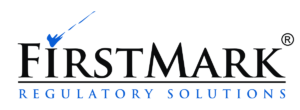FINRA CMA Application
FINRA CMA Filing Standards
FINRA CMA Filings
Rule 1017 Application
FINRA CMA Filing Standards
Rule 1017 Application
FINRA Rule 1017 specifies the reasons a broker-dealer must file a change of membership application (FINRA CMA Application). Those reasons include:
FINRA defines the phrase “material change in business operations” in FINRA Rule 1011(k). It deems a change material if;
This list is not exhaustive. In fact, it is a bit misleading. FINRA deems many, many more changes as material changes in business operations. Examples include:
Also, before filing a CMA, consider whether the filing of a FINRA MATCON instead (for which there is no FINRA fee) will suffice. Visit our FINRA MATCON page for more information.
The FINRA safe harbor expansion permits broker-dealers to expand without triggering the requirement to file a FINRA CMA application. To be eligible for the FINRA safe harbor expansion, a broker-dealer must not have a personnel restriction in its FINRA membership agreement. The FINRA safe harbor for business expansions is not available if a firm has a disciplinary history, and specifically if that history includes violations of specified rules within the last five years. However, if a firm is eligible for the FINRA safe harbor business expansion, the following limits apply (without a FINRA Rule 1017 application) to a firm with:
Associated Persons Involved in Sales (excluding back office personnel, clerical, etc.)
Number of Offices
Number of Markets Made
FINRA has said that proposed expansions outside the scope of the safe harbor provisions are not necessarily material changes. However, FINRA warns members that, “If a firm relies on the safe harbor without going through the CMA process, FINRA sill will review its expansions during the next cycle examination or when a CMA is filed for another purpose. The examiner or analyst will check to see if the safe harbor was used appropriately.”
FINRA membership applications (also called FINRA MAP applications) can be tricky. Per its rules, FINRA has 6 months to process an application once it is filed and the process often takes the full 6 months to navigate. Having been involved with hundreds of FINRA CMA applications in his career with FINRA, FirstMark’s founder, Mitchell Atkins, is in an excellent position to know exactly what FINRA is looking for. He anticipates the challenges that will invariably arise in the FINRA CMA application process and addresses these issues proactively when the application is filed. A FINRA CMA application, including material changes in business operations can be challenging, particularly when a broker-dealer needs to move quickly. An experienced FINRA CMA consultant can save significant amounts of time in helping your firm navigate the process, even in the most complex FINRA CMA scenarios.

A FINRA CMA application under FINRA Rule 1017 often requires that the Applicant provide a substantial amount of detailed information which satisfies all of the 14 standards of FINRA membership outlined in FINRA Rule 1014. When completing the application, each of the FINRA standards for membership must be supported with documentation and evidence. FINRA expects CMA filings to be carefully thought out. Each FINRA CMA filing must be filed through the FINRA Gateway on the electronic Form CMA. FirstMark’s founder has extensive experience with the FINRA standards for membership. This experience helps ensure that your FINRA CMA filing is complete and accurate, thus helping to reduce the duration of the CMA filing where possible.
Upon the filing of a FINRA CMA, an examiner will be assigned to review the application. After a filing of a CMA, FINRA is required by its rules to either request addition information (within 30 days) or if it does not request additional information, to serve a decision with 60 days of filing. Often there are numerous requests and responses, and the overall limit for the process is 180 days. FINRA may reject an application that it deems to be “substantially incomplete”. FINRA may “lapse” an application when an applicant fails to submit information it requested. FINRA will also schedule a membership interview during the process, after which it may request additional information.
